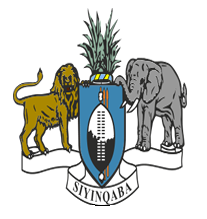Eswatini: Government
Key Figures
- Chief of State:
- King Mswati III
- Head of Government:
- Prime Minister Russell Dlamini
Overview
- Government Name:
- Kingdom of Eswatini
- Constitution:
- Adopted: 2005; The constitution outlines basic concepts such as the kingdom, the monarchy, protection and promotion of fundamental rights and freedoms, citizenship, the directive principles of state policy and duties of the citizen, the structure of the branches of government, and other functions of conduct.
- Government Type:
- Monarchy

Index of Economic Freedom
Country Risk Rating
Government Branches
| Main Powers | Election Process | Election Cycle 1 | |
|---|---|---|---|
| Executive | King, the prime minister, and the cabinet exercise total executive authority. |
Prime minister is appointed by the monarch. |
Appointment by monarch |
| Judicial | Based on a dual system where one part consists of courts based on the western model and laws, while the second part consists of Eswatini laws and customs. |
Appointed by monarch. |
Mandatory retirement age of 75 |
| Legislative | Create laws that must be passed by the king who has the power to deny every law in place and can recommend new laws to be installed. |
Senate has 20 members appointed by the monarch and 10 members elected by the Legislative Assembly, and the House of Assembly has 10 members appointed by the monarch and 60 members elected by plurality vote in single-member constituencies. (Currently only 69 seats filled) |
5 years |
Regional Trade Blocs
International Organization Participation [2]
Environmental Agreements [3]
Tax Information [2]
- Tax Authority:
- Information not available
- Tax Name:
- Information not available
Sources:
- ElectionGuide http://www.electionguide.org/
- EY, http://www.ey.com
- CIA World Factbook, https://www.cia.gov/the-world-factbook/
- U.S. Bilateral Relations Fact Sheets http://www.state.gov/r/pa/ei/bgn/


